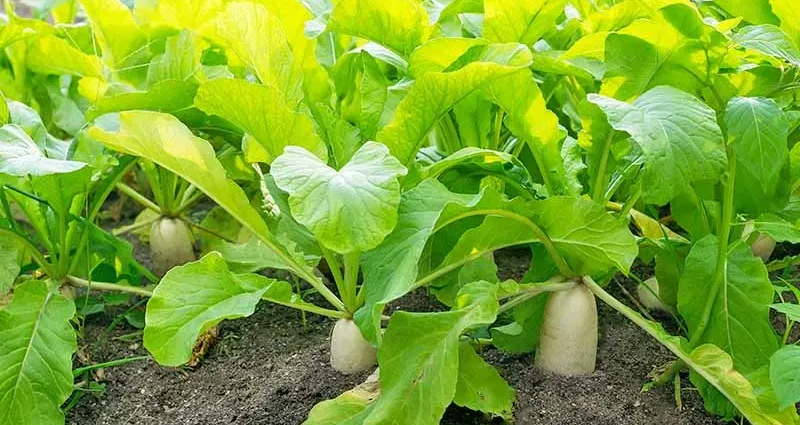Contents
Daikon: outdoor planting and care
Daikon is a radish / radish hybrid that originated in Japan. The popular name of the culture is Japanese radish. The fruits of the plant are quite large in size and have a pleasant sweetish taste without bitterness. Planting daikon can be done through seedlings or by sowing seeds in open ground.
Daikon: description and preparation for planting in open ground
Daikon belongs to the cabbage family, has oblong white fruits that can weigh from 1 to 15 kg. The culture is not capricious in the choice of soil, the main thing is that it is well fertilized. It is best to use humus or ready-made mineral solutions as fertilizer. For the garden, you need to choose a sunny place.
Planting daikon in open ground is carried out in July
Daikon grows especially well after strawberries, whose unusable bushes can be used as fertilizer
You can also choose cucumbers, onions or tomatoes as predecessors. The selected area must be dug to a depth of at least 25 cm, weeds and their roots must be removed.
The selected area must be dug to a depth of at least 25 cm, weeds and their roots must be removed.
Planting and caring for a daikon
Planting the daikon in open ground is best done in the first half or mid-July. Seeds are sown on a prepared bed. The sowing depth is 3 cm, the distance between the grooves is 40 cm, and the distance between the seeds is 15-25 cm. Before sowing the seeds, it is necessary to water the rows.
As soon as the first leaves appear, the plant must be thinned out. The strongest shoots should be left. In the same period, you can make top dressing with a complex mineral fertilizer.
The garden bed should be weeded regularly, and the soil should be loosened and the fruits should be hilled. Watering the culture should be 2-3 times a week. To protect the plant from pests, it is recommended to shower the seedlings with ash.
Harvested 2 months after planting. This must be done before the onset of the first frost. For harvesting, it is best to choose warm and dry weather. Heavy fruits should be dug out with a shovel, small ones can simply be pulled out by the green part of the plant.
Depending on the variety, the daikon can be stored for 2 to 6 months. For storage, choose a dark and cool place. A refrigerator or cellar is ideal. It is important to protect the culture from freezing temperatures.
Japanese radish is an unpretentious plant that does not require complex self-care. If you follow the simple rules for growing a crop, it will delight you with its healthy and tasty fruits.










